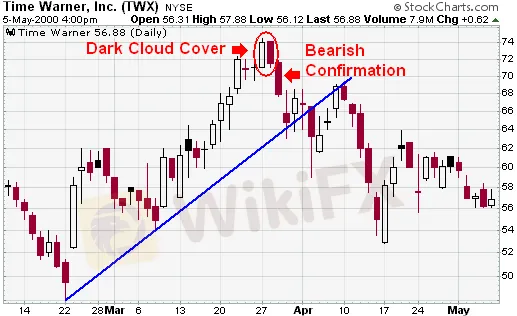简体中文
繁體中文
English
Pусский
日本語
ภาษาไทย
Tiếng Việt
Bahasa Indonesia
Español
हिन्दी
Filippiiniläinen
Français
Deutsch
Português
Türkçe
한국어
العربية
Unveiling Bullish Reversal Candles
Abstract:The Key to Unlocking the Door to Bullish Reversal Wealth.
Bullish reversal candles
A bullish reversal candlestick pattern signals a potential change from a downtrend to an uptrend. It's a hint that the market's sentiment might be shifting from selling to buying
Bearish Patterns
A bearish reversal candlestick pattern is a sequence of price actions or a pattern, that signals a potential change from uptrend to downtrend. It's a hint that the market sentiment may be shifting from buying to selling.
Bearish reversal patterns can form with one or more candlesticks; most require bearish confirmation. The reversal indicates that selling pressure overwhelmed buying pressure for one or more days, but it remains unclear whether or not sustained selling or lack of buyers will continue to push prices lower.
Without confirmation, many of these patterns would be considered neutral and merely indicate a potential resistance level at best. Bearish confirmation means further downside follow through, such as a gap down, long black candlestick, or high volume decline. Because candlestick patterns are short-term and usually effective for 1-2 weeks, bearish confirmation should come within 1-3 days.
Time Warner (TWX) advanced from the upper fifties to the low seventies in less than two months (see chart below). The long white candlestick that took the stock above $70 in late March was followed by a long-legged doji in the harami position. A second long-legged doji immediately followed and indicated that the uptrend was beginning to tire. The dark cloud cover (red oval) increased these suspicions and bearish confirmation was provided by the long black candlestick (red arrow).

Hammer Candlestick
Hammer candlesticks form when a security moves significantly lower after the open but rallies to close well above the intraday low. The resulting candlestick looks like a square lollipop with a long stick. If this candlestick forms during a decline, it is called a Hammer.

Hammer and Inverted Hammer
In a hammer candle, the opening, closing and high prices are located near each other creating a body at the top, while a long wick extends lower. The wick is usually twice as big as the body.

Irrespective of the colour of the body, both examples on the image above are hammers. The green candle is usually considered a stronger signal as the close occurs at the top of the candle, signalling strong momentum.
An inverted hammer is exactly what the name itself suggests – a hammer turned upside down. A long upper shadow (wick), accompanied by the closing, opening and low prices are all registered near the same level at the bottom. Again, the upper wick should be twice as big as the body.

Like with a hammer, the green version of the inverted hammer is more bullish because of its higher close.
Bear Flag Pattern
The bear flag pattern is a continuation pattern that indicates a brief consolidation before the price resumes its downward trend. Recognizing this pattern helps traders identify when to enter short positions.
Bearish Engulfing Candle
A bearish engulfing candle is a powerful signal that indicates a potential trend reversal. It occurs when a larger bearish candle engulfs a smaller bullish candle, suggesting that sellers have overtaken buyers and could lead to further price declines.
Engulfing Candlestick
The engulfing candlestick pattern, whether bullish or bearish, highlights a shift in market dynamics. A bullish engulfing pattern suggests potential upward movement, while a bearish engulfing pattern signals a possible downward trend.
Bullish Divergence
Bullish divergence occurs when the price makes a new low while an indicator (like RSI) forms a higher low. This discrepancy suggests that selling pressure may be weakening, indicating a potential reversal in price direction.
Disclaimer:
The views in this article only represent the author's personal views, and do not constitute investment advice on this platform. This platform does not guarantee the accuracy, completeness and timeliness of the information in the article, and will not be liable for any loss caused by the use of or reliance on the information in the article.
WikiFX Broker
Latest News
What Is Indices in Forex? A Beginner’s Guide to Trading Forex Indices
How to Use Retracement in Trading
CySEC warns the public against 17 investment websites
Robinhood Moves Toward MENA Expansion with Dubai DFSA License Application
FBI Issues Urgent Warning on Crypto Recovery Scams
Germany's Industrial Core Is Collapsing Under The US Trade Deal And The Green Agenda
Understanding Forex Spread Cost and How to Minimize It
Juno Markets: A Closer Look at Its Licenses
Complaints Against Weltrade | Traders Can’t Get Their Money Back
Fake Trader Faces 20 Years & RM9 Million Fine for RM1.45 Mil Derivatives Scam
Currency Calculator


